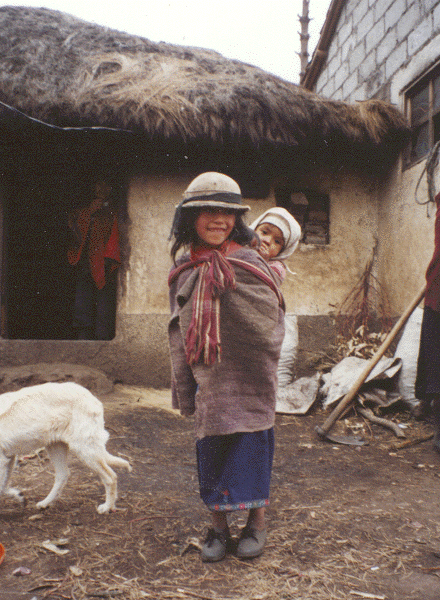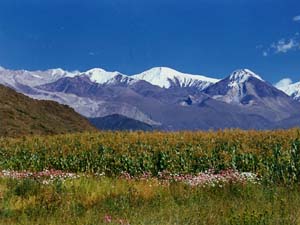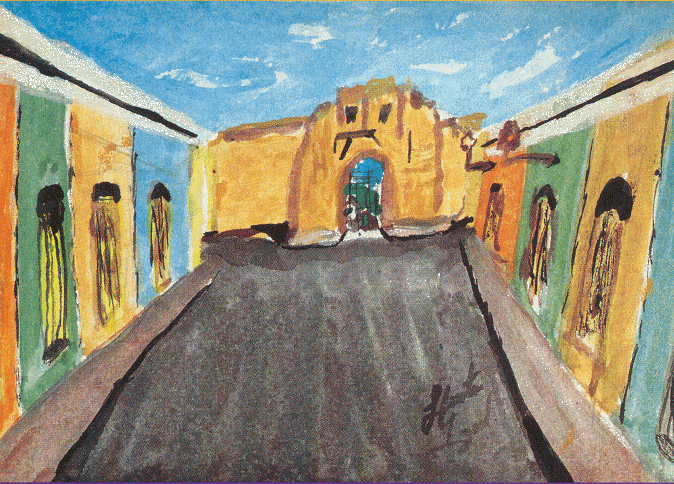This course explores Latin America as a culture area. What is a culture area, and in what way is Latin America a culture area? The notion of “culture area” appeared in anthropology over 50 years ago when ethnologist Clark Wissler first applied it to Native American groups in North American. He defined a culture area as a geographical/cultural region whose population and groups share important common identifiable cultural traits. In Wissler’s scheme the traits most commonly associated with a culture area were language, tools and material culture, kinship and other features of social organization, cultural personality traits, and cultural history. According to Wissler, groups located in a given geographical region which share similar traits could be said to belong to a culture area. Almost since its inception, Wissler's culture area concept has come under criticism from other anthropologists. Many have argued that the concept makes theoretical assumptions about the origins and diffusions of cultural traits; they criticize the concept for being selective about the kinds of traits it chooses to focus on. They also fault the concept for ignoring local and regional differences, and for focusing “culture” rather than on the political and economic processes such as colonialism and globalization which may have played a particularly important role in creating common cultural and social traits. The concept has also been condemned as ethnocentric, a tool Western thinkers and policy makers use to order the world in a way that suites their own world view, disregarding the way that native members may order their own cultural geographies. So should culture area be discarded in anthropology?
Despite its faults, anthropologists have continued to use the concept of culture area for a number of reasons. One reason is that the notion of culture area illuminates how neighboring societies shared and borrowed from each other, particularly before nations and borders interrupted such exchanges. The notion of culture area allows us to separate ethnic and other cultural characteristics from nationality, and allows us to examine how the two interact with each other. The concept also serves to remind us that many societies have been shaped by common historical processes (such as colonialism and nationalism) which link them and create similarities between them. Furthermore, anthropologists who study particular cultures find that they encounter common theoretical, methodological and analytical issues with others carrying out ethnographic research in the same geo-cultural region. In this sense when anthropologists speak of culture area, they aren't just referring to a specified geographical region, but also to a body of literature and study that focuses on this particular region. Thus, it isn't unusual for anthropologists who have worked in the Caribbean, Central America, or in Central Africa to interact a lot with each other, and this is often reflected in anthropological journals and books. There are even anthropological associations identified by geographic region (European Anthropology, Latin American Anthropologists, Africanists) which hold conferences and publish papers on the particular region they are interested in. Anthropology graduate students in almost every anthropology graduate program are required to master the ethnographic literature on one or two culture areas, and exploring the characteristics of a culture area (West Africa, South Asia, Melanesia, the Andean region) is part of the curriculum of every anthropology program. In this course it is particularly important that we recognize that when we study a culture area in anthropology, we focus not only on the social characteristics of a region, but also on how the discipline has studied and come to understand that region. This course is therefore not only about Latin America, but about what anthropology has learned from its focus on the region. It will integrate both aspects of the culture area.
Still, we need to ask: in what way is Latin America a culture area? Do Argentines, Jamaicans, Brazilians and Cubans, not to speak of the Shuar, Miskito and Tarahumara, share identifiable common cultural traits? On what basis do we organize an anthropology course around Latin America? Perhaps one answer is that in one sense “Latin America” represents a convenient way that we classify part of the world, as an area that is “knowable” and explainable, like other “knowable” areas such as Africa or the Orient. This way of ordering the world has its origins not only in geography, I think, but also in colonialism; it is one way that historically dominant cultures have represented the world they live in. Knowing the roots of this type of definition should make us cautious about how we use the concept: as a conceptual tool, it can serve certain purposes, but it may also hide built in preconceptions about the region. Another way of answering the question is that Latin America does form a self defined “area” because its various regions have been subject to common socio-political forces and experiences. The entire region was subject to European conquest and colonization, as well as to North American expansionist designs, and much of the region has been integrated into a global economy in similarly disadvantageous ways. Many of Latin America's regions share similar economic and political institutions. It is no wonder that important historical figures such as Bolivar, San Martin, Jose Marti, Augusto Sandino and Che Guevara thought of themselves first as Latin Americans, and only secondarily as having national identities and venues. Certainly important writers such as Garcia Marquez, Eduardo Galeano, Carlos Fuentes and Julio Cortazar belong to the whole continent, not just to their countries of origin. For the past two centuries Latin Americans have tried to identify the shared political and cultural traditions that have developed as a result of their common heritage. We need to recognize the culture area in this sense as well.
 cultural
traits doesn't conceal its complexity and diversity. Latin America
is actually comprised of a number of cultural and ecological regions, each
with its particular pre-hispanic heritage, its ecological characteristics,
its historical particularities, its unique problems and social conditions
which must be weighed in looking at the whole. We want to balance
our understanding of the entire area with a sensitivity to the area's diversity.
The course will attempt to encourage this balance.
cultural
traits doesn't conceal its complexity and diversity. Latin America
is actually comprised of a number of cultural and ecological regions, each
with its particular pre-hispanic heritage, its ecological characteristics,
its historical particularities, its unique problems and social conditions
which must be weighed in looking at the whole. We want to balance
our understanding of the entire area with a sensitivity to the area's diversity.
The course will attempt to encourage this balance.


